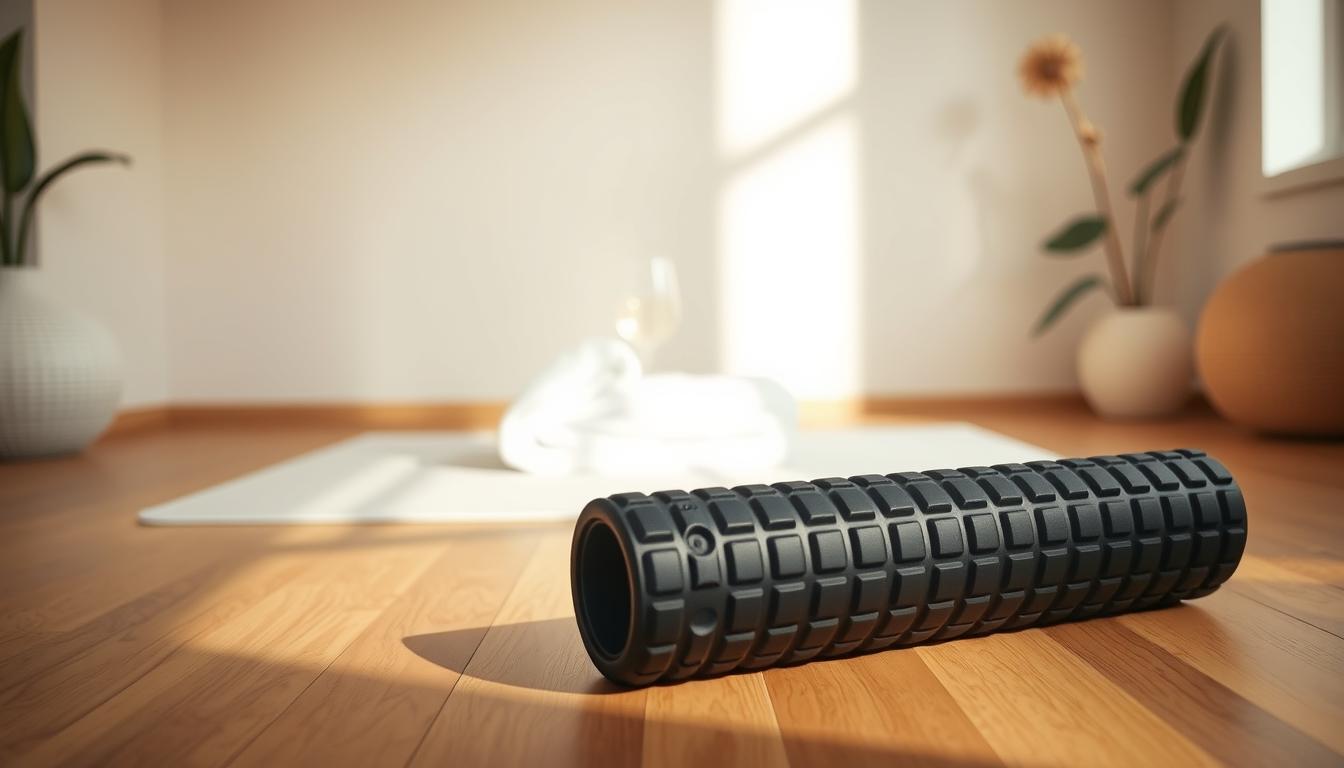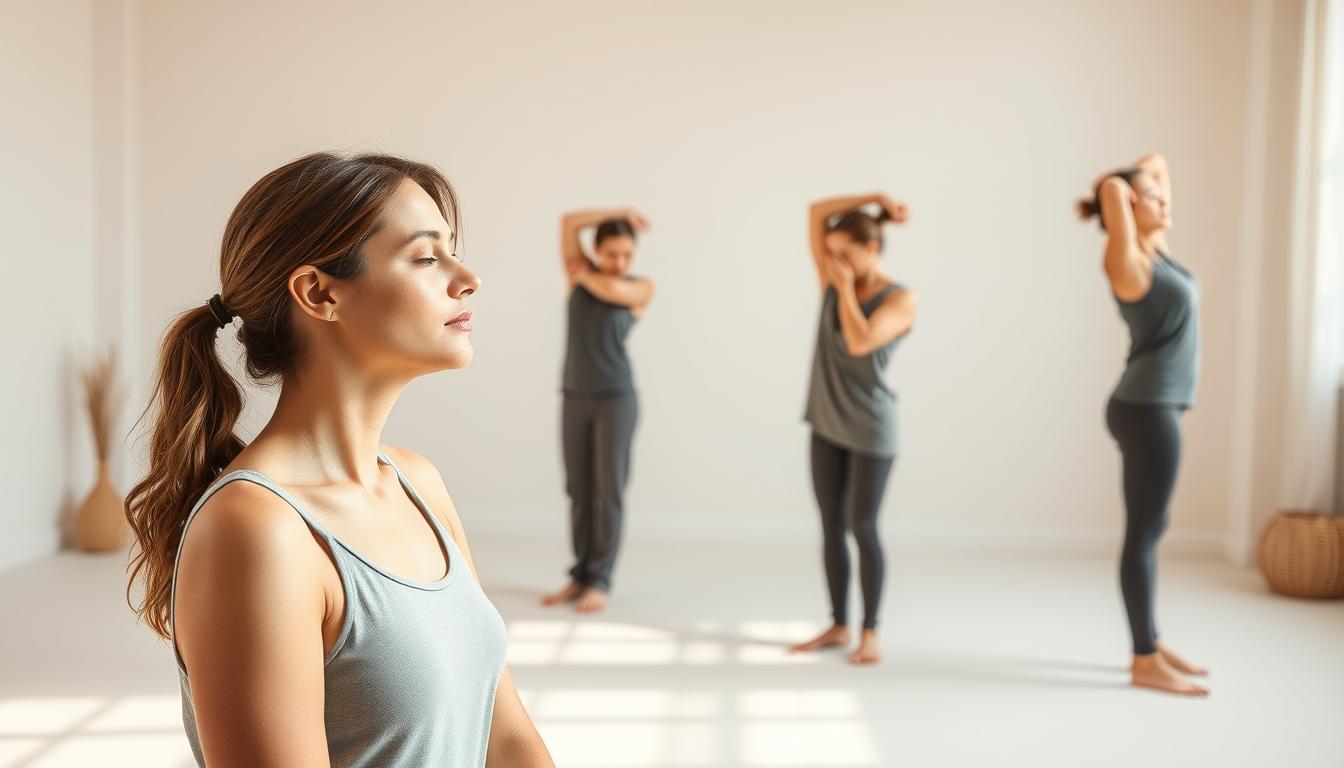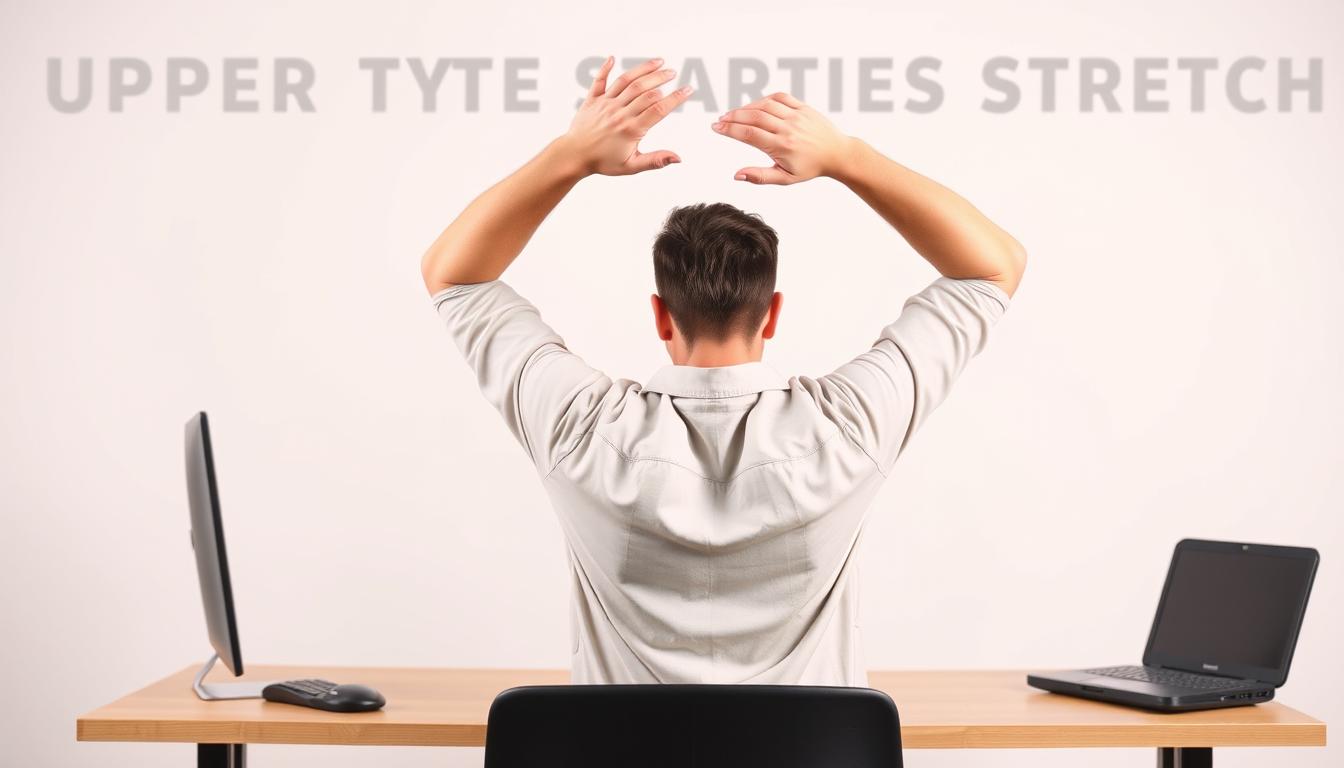Neck stiffness impacts almost a third of adults, causing discomfort and less movement. Luckily, effective home remedies for neck pain bring fast relief in five minutes. Moving your neck muscles instead of keeping them still boosts blood flow. This helps in faster recovery and easing stiffness. We will look at ways to reduce neck stiffness at home, especially when symptoms are short-term.
Understanding Neck Stiffness
Many people often face neck stiffness, which can be quite uncomfortable. It can happen for many reasons, like muscle strains and how we sit or stand. Knowing why it happens is important for stopping it before it starts.
Common Causes of Neck Stiffness
Neck stiffness usually comes from what we do every day. Poor neck posture, for example, can really make your neck hurt. With everyone on their phones a lot, a new problem called text neck has popped up. It happens when you look down at your phone too much, making your neck muscles sore.
The Impact of Poor Posture
Bad neck posture, like when you slump over your computer, is a big reason for neck stiffness. Being in this slouch position too much is bad news for your neck. But, if you sit up straight and stretch now and then, you can keep your neck feeling good. Just by paying a little more attention to how you sit and work, your neck won’t be as stiff.
How to Relieve Neck Stiffness in 5 Minutes
Neck stiffness can really get in the way, but there’s a quick fix. Simple neck exercises can ease your pain right away. They not only bring relief but also improve your neck’s health. Adding these exercises to your routine may make your neck more flexible and make you feel better.
Quick Exercises for Immediate Relief
Want to feel better in less than five minutes? Try these exercises:
- Head Tilts: Slowly tilt your head to the right and hold. Then do the same to the left. Keep going a few times.
- Neck Rolls: Gently roll your head in a circle. Start clockwise, then go counterclockwise.
- Shoulder Shrugs: Lift your shoulders up to your ears, hold, and relax. Do this several times.
Benefits of Regular Movement
Moving regularly does more than just loosen your neck. It’s good for your whole body. Here’s why:
- It helps your blood flow better, reducing muscle pain.
- Your neck will move easier thanks to increased flexibility.
- Staying active keeps your mood and energy up.
Hot and Cold Therapy Techniques
Do you have neck stiffness? Hot and cold therapy can help. These therapies relieve discomfort and help neck muscles recover. They serve different roles, like reducing inflammation and easing muscle tension.
Using Ice Packs for Inflammation
Ice packs can lower swelling and soothe sharp neck pain. They are easy to use at home. For the best results:
- Put an ice pack, wrapped in cloth, on your neck for 15-20 minutes.
- Focus on swollen areas.
- Do this every hour if needed, within the first 48 hours of feeling pain.
How Heat Relaxes Stiff Muscles
Hot therapy is great for loosening tight neck muscles. Heating pads or warm showers boost blood flow and relax muscles. To do hot therapy right:
- Use a heating pad on low for 15-20 minutes.
- Or, take a warm shower, letting the water hit your neck.
- Try using both hot and cold therapy for the best relief.
Effective Stretching Exercises
Adding stretching exercises for your neck to each day can really help improve neck flexibility and ease pain. Doing stretches regularly increases blood flow and lessens tension, which is key for neck health. Here are two great stretches that can lessen discomfort and help you relax.
Head Tilts and Rolls
Head tilts and rolls are easy but very helpful for easing pain. To do head tilts, lean your head to one side until your ear is close to your shoulder. Stay like this for 15-30 seconds, then switch to the other side. For head rolls, slowly move your head in a circle to relax stiff muscles. Doing this a few times can really help make your neck more flexible.
Shoulder Blade Squeezes
Shoulder blade squeezes are great for reducing tension in the upper back and improving neck flexibility. Whether you’re sitting or standing, keep your back straight. Try to squeeze your shoulder blades together, imagining you’re holding a pencil between them. Hold this squeeze for 5 seconds, then release. Doing this 10 times can provide effective relief.
Postural Adjustments for Long-Term Relief
Relief from neck stiffness starts with changing your surroundings, especially your workspace. A good setup promotes the right posture. This lessens the chance of getting text neck. Changing your workspace and habits makes a big difference for your neck.
Adjusting Your Workspace
Keep your computer screen at eye level for the right posture. This helps avoid neck strain. Use these tips for a better workspace:
- Position your monitor so that the top of the screen is at or just below eye level.
- Use an adjustable chair that supports your lower back.
- Keep your feet flat on the ground, with knees at a 90-degree angle.
- If using a laptop, consider a separate keyboard and stand to elevate the screen.
Using Tech Responsibly to Avoid Tech Neck
It’s important to be aware of your posture when using devices. Follow these strategies with your tech:
- Hold your phone at eye level while texting or browsing.
- Take regular breaks to stretch and reset your posture.
- Limit prolonged use of devices in awkward positions.
- Utilize voice-to-text features to minimize neck strain.
Over-the-Counter Pain Relief Options
When you have neck pain, over-the-counter meds can help a lot. They lower the pain and help you move better. This means you can enjoy life more. NSAIDs and acetaminophen are often suggested for mild neck issues.
When to Consider Pain Relievers
Knowing when it’s time for over-the-counter medication is key. Here are some reasons:
- If neck stiffness interferes with daily activities.
- When mild to moderate pain persists for more than a couple of days.
- If other non-pharmaceutical methods, such as rest or stretching, have not provided significant relief.
NSAIDs, like ibuprofen and naproxen, deal with swelling. Acetaminophen tackles the pain directly. Always use as directed and talk to a doctor if things don’t get better. They can give a full check-up and find the best way to help you specifically.

Incorporating Movement into Your Daily Routine
Adding movement breaks into your workday can really boost your neck health and overall happiness. It’s key to mix simple exercises into your day for neck relief. Moving around for just a few minutes can ease stiffness and promote better posture.
The Importance of Breaks at Work
Sitting all day can make your neck muscles tight. Taking breaks to move helps fix this problem. By stretching or walking regularly, you can improve blood flow and reduce tension. This helps your body feel better and keeps your mind clear, making you more efficient all day.
Many work-friendly exercises can be done without drawing attention. Here are some you can try:
- Neck rolls: Gently roll your head in a circle to ease tension.
- Shoulder shrugs: Lift and drop your shoulders to loosen stress.
- Side neck stretches: Tilt your head to each shoulder and hold for a bit.
Doing these simple exercises often will improve your day and neck comfort. Remember to take short breaks for these movements to keep your neck limber and relaxed.
Additional Neck Relief Techniques
Adding specific steps to your daily habits can make your neck feel better. These activities help lessen tightness and make you relaxed, which is really important if your neck often hurts. Using simple things like thinking quietly and warming your neck, plus massaging it, can really help ease stress and make your neck less stiff.
Meditation and Stress Management
Meditation can really help bring down stress, making your neck feel less tense. Practicing mindfulness or taking deep breaths can create a peaceful feeling. Making these methods a part of your life can give you calm and reduce the pain tied to stress.
Heat and Massage for Relaxation
Warming up your neck can help relax tight muscles. Using something warm or a neck wrap that heats up boosts blood flow. Adding a soft neck massage into the mix can push relaxation further.
Planning to warm up and massage your neck regularly is a good strategy. It aids in lessening pain and helps in relaxing.
Conclusion
Tackling neck stiffness means using different methods. This includes exercises that target your neck, keeping good posture, and learning how to relax right. These strategies work together to keep your neck healthy and make everyday tasks more comfortable.
Start taking good care of your neck by moving more and using both hot and cold treatments. This way, you’re not just fixing stiffness faster; you’re also working on staying well for good.
Keeping your neck in good shape is key to being healthy all over. If you stick with these tips, your neck will stay strong and pain-free. This means you can keep doing what you love without neck stiffness slowing you down.



